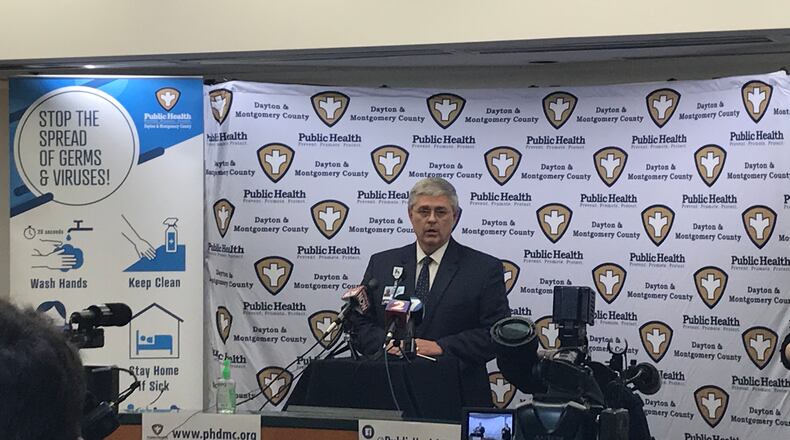RELATED: Local ER doctor describes dealing with unknown
“Last week, the total emergency room visits dropped off a bunch,” said Dr. Michael Dohn, medical director for Public Health - Dayton & Montgomery County.
One of the biggest variables that will impact how the outbreak continues is how people behave and move in the community, which is something that can be hard to predict, said Dohn.
At the end of December, emergency visits surged as flu season spiked and pushed local ERs close to capacity. At the time, while ERs treated all patients, Miami Valley Hospital urged people who were not having an emergency to go to an urgent care, or talk to their provider.
The last week, Dohn said emergency room visits fell, even though with the outbreak there are more people getting sick.
Coronavirus: Stay at home order could be extended in Ohio
“It tells me that people are getting sick and feeling like they’ve got the disease, they aren’t going to the emergency room, they’re doing what we say,” Dohn said, which is to stay home unless your symptoms worsen to where you can no longer take care of yourself.
“This means that not only does the hospital have more capacity, but the emergency rooms have much more capacity now than they did. And that also makes me think that you all are doing a good job about staying home, washing your hands and all the other stuff.”
For the region, additional cases in the region were confirmed Tuesday. There are 36 Butler County confirmed cases, three in Champaign, six in Clark, 13 in Darke, six in Greene, 52 in Miami, 37 in Montgomery, one in Preble, and 21 in Warren, according to the latest update from Ohio Department of Health as well as some additional cases recently recorded by county officials.
MORE: What coronavirus means for local seniors and services
These are only the confirmed cases. It is difficult to get a true picture of who has the virus because of limitations on testing, but with the way the virus is spreading infectious disease experts say there are many more cases than those confirmed.
In Montgomery County, while there wasn’t a case confirmed by a test until mid March, one of the people with a confirmed coronavirus case was having symptoms as early as Feb. 29, according to state information. In Butler County, one of the people with a test confirmed case started having symptoms March 1.
There is a limited supply of the supplies needed to test for coronavirus, a limited amount of protective gear for people needed to collect the testing samples, and limited lab capacity compared to demand, with private laboratories backed up for days.
Coronavirus: Complete Coverage
“People want to be tested and I understand that and if I have my way and I could do it, we would test everybody because there would be benefits to that,” Dr. Kevin Sharrett, Greene County Public Health Medical Director, said. “But the reality of it is even though we’re hearing each and every day — and I’m excited about the prospects of rapid testing and in-office testing — and it is on the horizon. The truth of matter is, is it’s not here yet. And so there’s still real limitations on testing.”
Most people who have COVID-19 will have a mild illness and recover, and people with a mild illness can care for themselves by isolating themselves at home. People with a mild illness are not being tested and are being asked to stay home and get better.
Gov. Mike DeWine on Monday and Tuesday urged hospitals to send more tests to Ohio Department of Health’s laboratory, which is turning around test results faster than private labs.
About the Author
